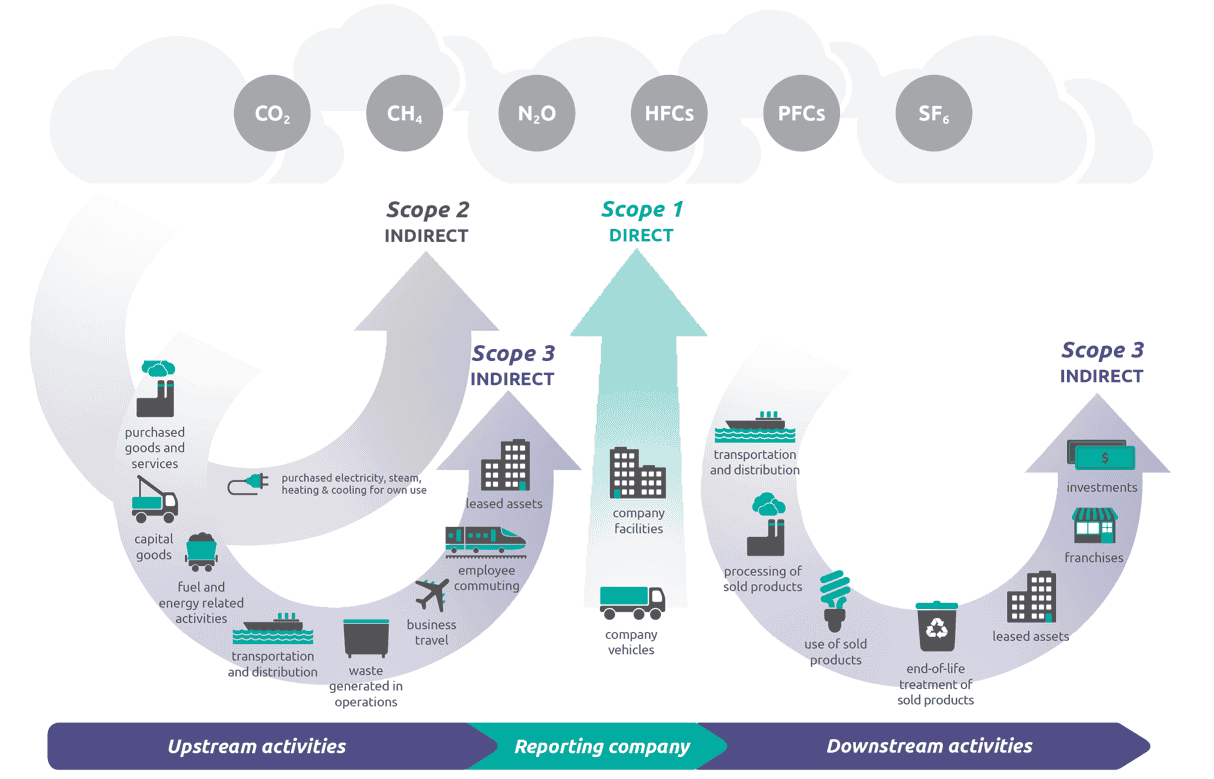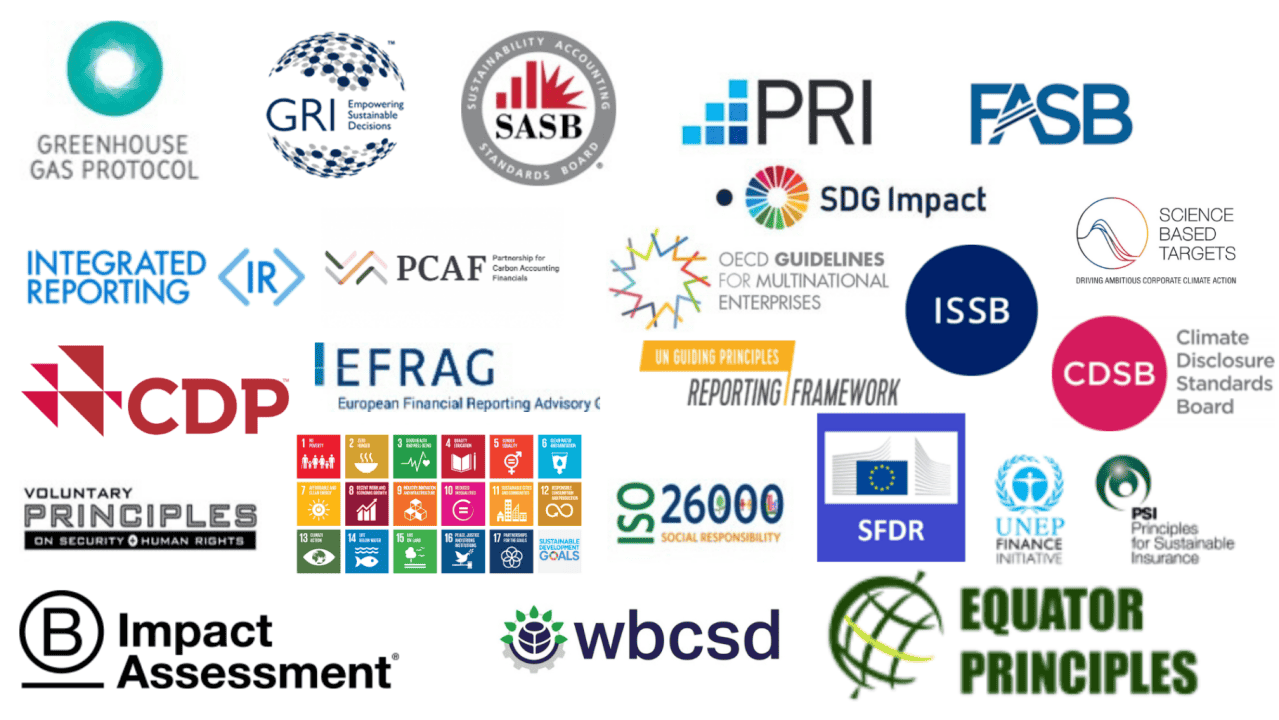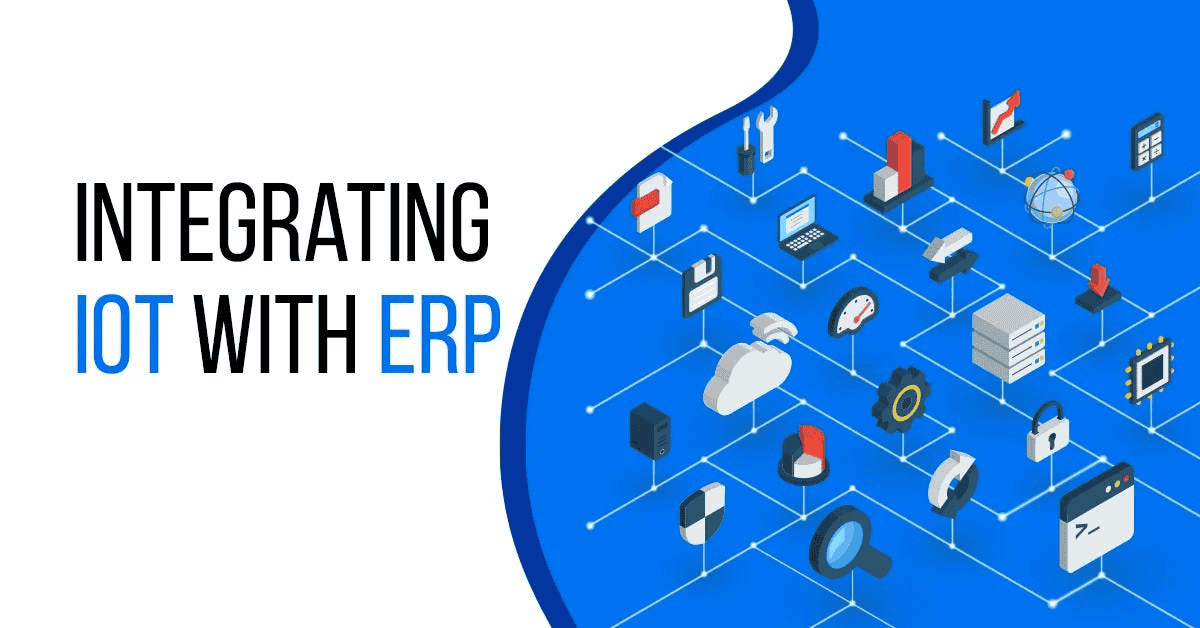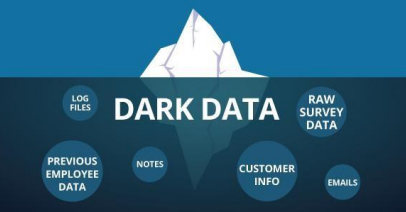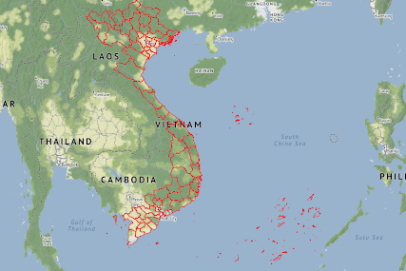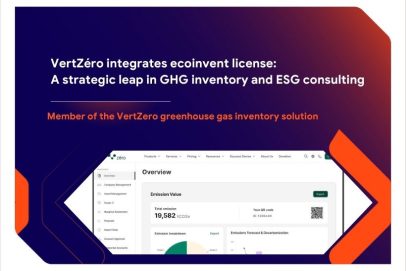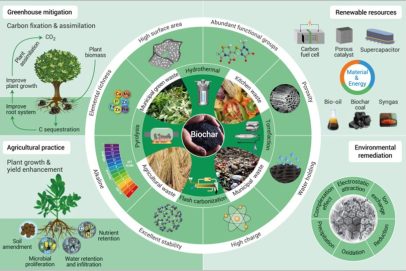Carbon accounting software – Which option is right for Vietnamese businesses
In the context that requirements for emission reduction and greenhouse gas reporting are gradually becoming mandatory conditions in the global supply chain, especially in markets such as the EU, the US or Japan, Vietnamese businesses can no longer stand out from the green game. A complete, accurate and consistent inventory of greenhouse gases is the first step to determine emission levels, develop a roadmap to reduce and meet requirements from partners, regulators as well as investors.
However, in reality, many Vietnamese businesses – especially small and medium-sized enterprises – are still facing a series of challenges: lack of professional personnel, limited input data, unfamiliarity with the international standard inventory process, and especially not knowing which software or tool to choose that suits their internal conditions.
This article aims to help businesses clearly identify their greenhouse gas inventory needs, thereby making software choices that are suitable for their scale, industry, technical readiness, and long-term integration capabilities – contributing to creating a solid foundation for an effective and sustainable green transition.
1. Where are Vietnamese Enterprises in Greenhouse Gas Inventory
Greenhouse Gas Inventory according to the GHG Protocol is the process by which the system collects, measures and reports all greenhouse gases arising from the operation of an organization or within a certain range over a specified period of time. The purpose of the inventory is to accurately and transparently determine greenhouse gas emissions, helping organizations assess their environmental impact, thereby developing effective emission reduction strategies. The GHG Protocol is a widely recognized set of international standards that provides detailed guidance on how to classify and calculate greenhouse gases, including CO₂, CH₄, N₂O, and others, as well as the breakdown of emissions according to Scope 1 (direct emissions), Scope 2 (indirect emissions from electricity), and Scope 3 (other indirect emissions in the value chain).
Greenhouse gas emissions by the three scopes
Source: GHG Protocol
In the face of the wave of tightening global environmental regulations such as the EU’s CBAM, the CSRD Sustainability Reporting Standard, along with Decree No. 06/2022/ND-CP in Vietnam requiring businesses to report greenhouse gas emissions periodically, greenhouse gas inventory has become a mandatory requirement. especially for exporters, listed or participating in international supply chains.
However, the level of readiness of Vietnamese businesses to meet this requirement is still very different, which can be divided into three main groups based on experience and capacity to perform inventory. Clearly identifying the group to which you belong will help businesses choose the right software and solutions, and build a more effective and sustainable green transformation roadmap
However, the readiness level of Vietnamese businesses is currently very different, which can be divided into three main groups:
1.1. Beginner Team
Characteristics: Greenhouse gas inventory has never been carried out, emission data is not available, and the inventory process has not been fully visualized. Lack of dedicated personnel, relying on manual spreadsheets, unfamiliar with international standards such as GHG Protocol.
For example, a small furniture manufacturer in Binh Duong first received a request from a European customer to provide emission data for exported wood products, but did not know where to start.
1.2. The Tester
Traits: Has conducted a test inventory for specific units, factories, or orders – usually at the request of a partner. You may have hired a consultant or used international software but it has not operated stably. Data is still fragmented, the process is not consistent.
For example, a medium-sized textile and garment enterprise in Nam Dinh used to make a GHG report for an export order to Japan at the request of the brand. However, due to the lack of an internal data system, the annual update is still external.
1.3. The mature team
Features: There is an annual inventory process, data is standardized according to Scope 1, 2 and part of Scope 3. There is an internal environmental or ESG team, which is aiming to integrate with financial statements and standards such as GRI and TCFD.
Example: A large food and beverage group in Ho Chi Minh City. Ho Chi Minh City has fully inventoried greenhouse gases for all factories, used specialized software, and is preparing a report according to CSRD standards when expanding the EU market.
2. Determine the level of the readiness
Determining the right level of readiness will help businesses choose greenhouse gas inventory software (GHG accounting software) that suits their current needs and capabilities. These are digital tools designed to support businesses in collecting, calculating, classifying and reporting greenhouse gas emissions according to international standards such as GHG Protocol, ISO 14064 or domestic legal requirements. If the wrong choice is made, businesses may fall into a situation of over-investment compared to actual needs, wasting resources, or conversely, using software that lacks necessary features, leading to data distortions, making it difficult to meet reporting and monitoring requirements. In the context of increasingly stringent emission compliance requirements, a “start small but on the right track” strategy will help Vietnamese businesses be more stable on the green transformation journey.
So how do businesses know which of the three groups they are willing to fall into?
The answer lies in the need for businesses to reflect on their own internal situation, through answering some core questions. Here are 06 questions businesses should ask themselves to accurately locate themselves in the greenhouse gas inventory picture:
06 Questions businesses should ask themselves to determine the level of readiness:
2.1. Has the enterprise ever carried out a greenhouse gas inventory? At what level does the enterprise want to take inventory?
This question is intended to help businesses re-evaluate the level of experience and desired scope when conducting a greenhouse gas inventory. If the enterprise has never carried out an inventory, that is, it is in the early stages, there is no emission data, there are no personnel in charge and are not familiar with international processes or standards such as the GHG Protocol. In this case, businesses should start with a tool that is simple, easy to use, and has detailed instructions.
If you’ve done an inventory in a pilot phase – for example, for a factory, an order, or at a customer’s request – but the data is fragmented and the process hasn’t been standardized, you’re in the testing phase. At this level, businesses need a flexible, scalable software that supports each step towards a comprehensive inventory.
Meanwhile, if the business has experience in annual inventory, has systematically stored data, has its own ESG department or personnel in charge, this is a sign of a mature business in greenhouse gas inventory. Businesses can now consider deploying in-depth software, capable of integrating multiple data sources and reports according to international standards such as CSRD, GRI or ISO 14064.
Popular ESG Disclosure Standards
2.2. What is the level of budget and technical readiness to implement the software?
The assessment of the financial investment ability and technical capacity of the enterprise plays a key role in choosing the right greenhouse gas inventory solution. If budget resources are limited or the technical team is not experienced enough to operate complex software, businesses should prioritize tools that are simple, affordable, easy to use, and have technical support from the vendor. On the contrary, for businesses with strong financial and technical potential, investing in specialized software with many integrated features, high customizability, and future scalability will bring long-term benefits. Determining the right level of readiness helps avoid wasting resources, and at the same time ensures that the software implementation goes smoothly and supports the sustainable development goals of the business.
2.3. Are businesses under pressure from the outside to report emissions?
This question helps businesses assess the urgency and mandatory requirements in carrying out greenhouse gas inventories. If the business is operating in the supply chain of multinational corporations or markets with strict regulations such as the EU with CBAM, or reporting standards such as CSRD, the pressure on emissions reporting will be enormous. This requires businesses to have an accurate, transparent inventory system and be able to provide data as required in a timely manner. On the contrary, if the business has not been required or is only in the preparation stage, the pressure will be lighter and the inventory can be carried out according to the roadmap in accordance with the existing capacity. Understanding external pressures will help businesses choose software with the right features, from simple tools to comprehensive solutions, support regulatory compliance and improve reputation in the eyes of partners and investors.
2.4. Do you currently have an input data system for inventory?
This question helps businesses assess the readiness of their data infrastructure – a key factor that determines the efficiency and accuracy of the greenhouse gas inventory process. If the business does not have a centralized data system, the data is still scattered in many departments (such as operation, purchasing, accounting, etc.), or stored in manual and discrete form, the inventory process will be time-consuming, error-prone and highly dependent on general personnel. On the contrary, if businesses already have a data system that is clearly managed, interconnected and periodically updated – such as data on electricity consumption, fuel, raw materials, logistics, etc. – then the inventory will be easier and can move towards automation. This is also the basis for choosing software that can connect and integrate with existing systems such as ERP, IoT or energy management software, helping to minimize manual operations and improve the reliability of inventory results.
Integrating IoT and ERP
2.5. What are the characteristics of the business’s industry?
The business industry has a great influence on the type and scale of data that needs to be collected for greenhouse gas inventory. Each industry will have specific emission sources and different levels of complexity in the data collection process. For example, the agricultural sector is one of the major contributors to Vietnam’s total greenhouse gas emissions. According to a report by the Ministry of Natural Resources and Environment, in 2020, this industry emitted about 65 million tons of CO₂ equivalent, accounting for about 19% of total national emissions. The main sources of emissions come from the digestion of methane-emitting cattle, the use of chemical fertilizers that cause nitrous oxide, along with organic waste management in agricultural production. The industry also contributed significantly with about 80 million tonnes of CO₂ equivalent in 2020, accounting for about 23% of total national emissions. Emissions in this industry mainly come from the production of cement, steel, energy consumption by fossil fuels and chemical reactions in production. These data help businesses better understand the specific emission levels by industry, thereby accurately identifying data sources to focus on when carrying out greenhouse gas inventories.
2.7. Do the staff have the knowledge and ability to perform the inventory themselves?
This question aims to determine the intrinsic capacity of the enterprise in implementing a greenhouse gas inventory – from understanding the concept, calculation methods, to the ability to collect, process and report emissions data. If you do not have well-trained personnel in inventory or ESG, are still confused between terms such as Scope 1, 2, 3 or are not familiar with international standards such as the GHG Protocol, you need support from consulting or software with step-by-step guidance. Conversely, if the team has been involved in the inventory process, has a solid background knowledge and ability to master the process, businesses can choose more in-depth software, allowing customization or integration with existing systems. Properly assessing human resource capacity will help businesses not fall into the situation of “software is strong but users are struggling”, and at the same time orient appropriate training plans to build long-term internal capacity.
3. COMPARISON OF TYPICAL GREENHOUSE GAS SOFTWARE TODAY
After businesses have clearly identified the location and readiness level in the journey of applying greenhouse gas inventory software, the next step is to research, evaluate and select the solutions that best suit their actual needs. This not only helps businesses avoid wasteful investment in software that is too complex or insufficiently featured, but also ensures that the inventory process takes place smoothly, accurately and effectively. Therefore, businesses need to carefully consider factors such as specialized features, integration with existing systems, user-friendliness, as well as deployment and operating costs. To assist you in this step, here is a comparison of popular greenhouse gas inventory software on the market, making it easier for you to have an overview and compare options before making a final decision:
| Software | Customer
goal |
Key features | Strengths | Restrict |
| Persephones | Financial institutions, listed companies, multinational corporations (MNCs) | • Greenhouse Gas (GHG) Inventory Range 1–3
• PCAF, TCFD compliant – Audited emission calculator • API integration • ESG reporting for businesses |
• Highly detailed with allocation rules and partner integrations
• API for ERP/CRM/finance tools • Customizable workflows • Cloud-based business model |
• Medium to complex enterprise-level user interface
• High complexity and cost; Not suitable for small and medium-sized enterprises (SMEs) |
| IBM Evinzi
(Approx. Intel. More) |
• Government, utility industry, and industries greatly affected by climate change
|
• Track Scope 1–3 emissions
• Climate risk analysis • AI-based Scenario Forecasting (Watson) – ESG Data Center |
• Integration into IBM’s product ecosystem – matching climate data from multiple sources
• Climate risk analysis, infrastructure, public policy planning
|
• Less customization without the IBM ecosystem
• High cost and dependence on IBM; Less intuitive greenhouse gas calculation process • Medium level – strong visualization but complex setup
|
| SAP Sustainability Footprint | • Manufacturers using SAP, logistics industry, product-focused enterprises | • Scope 1–3 Emissions Tracking – Product Life Cycle Analysis (LCA) – Supplier Emissions – Integration with SAP ERP/Supply Chain | • Suitable for greenhouse gases calculations by product/supply chain (detail to each component in the BOM)
• Native integration in the SAP ecosystem • Calculate product carbon footprint, supply chain emissions, product life cycle analysis (LCA)
|
• Need to be implemented by professional services
• Optimized for SAP users • Does not operate independently; Complex implementation without SAP system
|
| Salesforce Net Zero Cloud | Businesses using Salesforce, ESG teams, CDP/TCFD reporting units | Scope 1–3 Emissions Tracking – ESG Dashboard – Emission Reduction Planning – Disclosure Tools in Accordance with CDP/GRI/TCFD tools | • Suitable for Salesforce users
• API integration ready • User-friendly, easy-to-use interface for ESG teams • Supporting business sustainability, ESG disclosure integrated with CRM
|
• Limited in handling complex emissions from the supply chain/value chain
• Covers most of the Scope 3 categories but lacks industry-specific details • Dependent on Salesforce; not strong in the manufacturing sector or in-depth Scope 3 analyses |
| VertZéro by FPT | Vietnamese and Southeast Asian enterprises, banks, public sector organizations | • Full support for KNK calculation in all 3 Ranges
• Portfolio-based (in line with GHG Protocol) • Scope 1–3 Greenhouse Gas Accounting – ISO 14064-1 Compliance, GHG Protocol – Vietnam Legal Compliance – Local Automatic Emission Factor –GHG Planning Dashboard
|
• API integration
• Vietnam GHG data and by specific industry • Deploy as SaaS + on-premise installation • High level – localized, customizable interface on demand • Localized GHG accounting for the ASEAN market |
• Still expanding the global classification system; Little known outside of Asia
• The price is a bit high compared to the budget of SMEs • Open to customization, so it may take time to develop according to local requirements.
|
4. NOTES WHEN DEPLOYING
4.1. The importance of personnel training
The importance of personnel training cannot be underestimated in this process. A knowledgeable and proficient team will help businesses get the most out of their features, process data accurately and quickly, and be ready to respond to new changes and requirements in greenhouse gas reporting. Training also contributes to building a sustainable green culture in businesses
4.2. It is necessary to clearly define the goals before implementing them
Before implementation, businesses need to clearly define what their greenhouse gas inventory objectives are: to serve internal reporting, to meet partner requirements, or to comply with legal regulations. This helps to choose software that is suitable for actual needs, avoiding the case of investing in solutions that are too complex or conversely, lacking necessary features, affecting efficiency and increasing unnecessary costs.
4.3. Accompanying role – especially for first-time inventories
Finally, the role of accompanying consultants is very important, especially for businesses that are conducting greenhouse gas inventories for the first time. Consulting not only provides technical support but also helps build processes, analyze data and guide effective implementation steps, ensuring that businesses are on the right track in their green transformation journey, saving time and resources.
In the context that regulations and laws on greenhouse gas inventory in Vietnam are increasingly improved and concretized, the selection of appropriate software is not only based on general criteria but also must ensure compatibility with specific national requirements. Currently, Vietnam has issued separate emission factors, forms and inventory processes to suit the actual conditions and sustainable development policies of the country. Therefore, businesses need to prioritize choosing software that can be designed or customized to accurately meet Vietnam’s regulations, forms and technical standards. This helps businesses not only comply with the law, but also reduce the risk of errors in reporting, and at the same time make it more convenient to connect and share data with state management agencies and domestic partners.
5. CARBON ACCOUNTING SOFTWARE: OPTIMIZE ACCORDING TO THE ACTUAL NEEDS OF BUSINESSES
In the journey of reducing emissions and implementing greenhouse gas inventories, software serves as an effective support tool for businesses to collect, analyze and report data efficiently and accurately. However, each business has different sizes, industries, resources and levels of understanding, so the demand for software is also very diverse. The selection of software should be based on a realistic assessment of the capacity, goals and operational capabilities of the business, thereby optimizing costs, increasing efficiency and ensuring that it meets legal requirements as well as international standards. A greenhouse gas inventory software optimized according to actual needs will help businesses move more firmly on the path of green transformation, improve competitiveness and sustainable development.
In that context, FPT with VertZéro greenhouse gas inventory software is always ready to accompany businesses on the journey to reduce emissions. VertZéro not only provides an accurate and transparent inventory solution, but also has the flexibility to customize according to the size, industry, and technical readiness of the business. With in-depth consulting support, VertZéro helps businesses determine the right emission reduction roadmap, select the most optimal software features, thereby improving management efficiency and ensuring compliance with regulations such as Regulation 06, CBAM or CSRD. Thereby, FPT and VertZéro contribute to building a solid foundation for Vietnamese businesses in the process of green transformation and sustainable development in the global market.
References
- Greenhouse Gas Protocol. (n.d.). A corporate accounting and reporting standard (Revised edition). Retrieved from https://ghgprotocol.org/corporate-standard
- IBM Corporation. (n.d.). Sustainability software solutions. Retrieved from https://www.ibm.com/us-en
- SAP SE. (n.d.). SAP Sustainability Footprint Management. Retrieved from https://www.sap.com/sea/products/scm/sustainability-footprint-management.html
- Salesforce, Inc. (n.d.). Net Zero Cloud. Retrieved from https://www.salesforce.com/net-zero/cloud/
- Persefoni. (n.d.). Customers. Retrieved from https://www.persefoni.com/customers
| Exclusive article by FPT expert
Mr Tuan Pham – Product Owner of VertZero, MBA in Climate Change. Specializing in GHG Inventory, LCA, and EU Taxonomy. In charged of VertZéro product development. |


